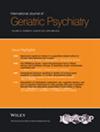Association of Longitudinal Trajectories of Physical Frailty With Dementia Status in Older Adults: A National Cohort Study
Abstract
Background and Objectives
The longitudinal patterns of change in physical frailty and their associations with the subsequent dementia risk remain unclear. This study aimed to (1) explore the long-term trajectories of physical frailty over a 6-year period in older adults without dementia at baseline; (2) identify the socio-demographic and health-related factors associated with different physical frailty trajectories; and (3) examine the longitudinal relationships between different physical frailty trajectories and subsequent risk of dementia.
Research Design and Methods
This national cohort study used data from the National Health and Aging Trends Study (NHATS) conducted in the United States from 2015 to 2021 and included adults aged ≥ 65 without dementia (n = 2245) at baseline in 2015. Group-based trajectory modeling was used to describe the longitudinal changes. Socio-demographic and health-related characteristics were compared across the identified physical frailty trajectories using bivariate analyses, employing Rao–Scott chi-square tests for categorical variables and design-based F-tests for continuous variables. Multinomial logistic regression analyses were conducted to examine the relationships between different frailty trajectories and subsequent dementia status.
Results
Three frailty trajectories were identified: low-stable (74.00%), low-increasing (21.14%), and high-level (4.86%). Participants in the low-increasing and high-level groups were predominantly older, female, minorities, unmarried, and less educated and had a lower income, more comorbidities, and greater anxiety and depression symptoms (p < 0.001). Compared with the low-stable group, older adults in the low-increasing group had higher risk of possible dementia (RRR: 2.37, 95% CI: 1.41–3.97, p < 0.001) and probable dementia (RRR: 1.71, 95% CI: 1.08–2.73, p = 0.02); similarly, older adults in the high-level group had higher risks of possible dementia (RRR: 4.24, 95% CI: 1.74–10.36, p < 0.001) and probable dementia (RRR: 2.99, 95% CI: 1.32–6.76, p = 0.01). No significant differences were found in the risk of dementia between the high-level frailty group and the low-increasing frailty group (p > 0.05).
Conclusion and Implications
This study highlighted the importance of regular frailty monitoring for early detection and informed future interventions that could delay frailty progression and potentially reduce dementia risk.


 求助内容:
求助内容: 应助结果提醒方式:
应助结果提醒方式:


